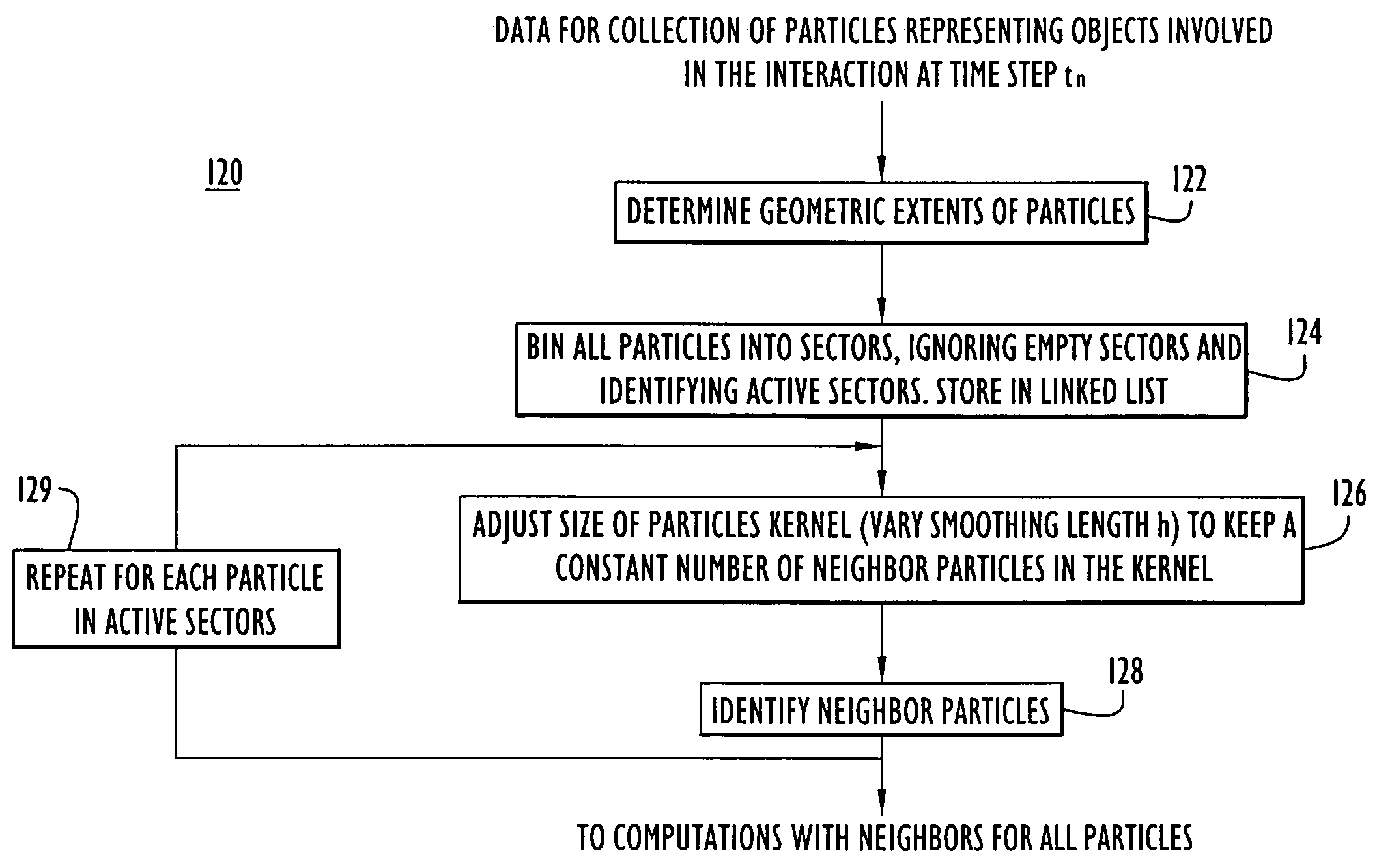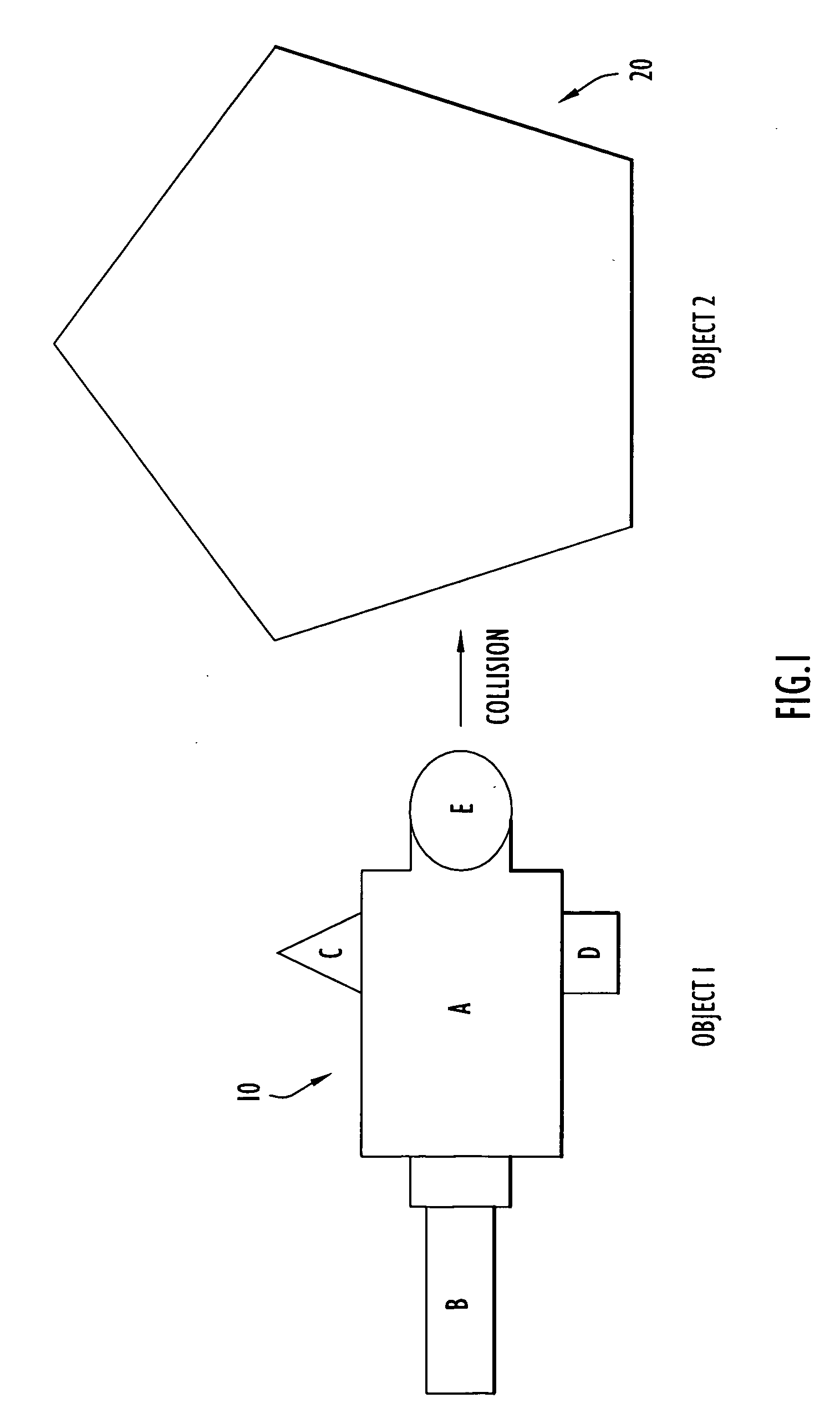Sector meshing and neighbor searching for object interaction simulation
a neighbor search and object interaction technology, applied in the field of computer simulations of physical phenomena, can solve the problems of reducing the number of computations performed at a given time step, reducing the number of particles in the computational mesh, and reducing the accuracy of the simulation run tim
- Summary
- Abstract
- Description
- Claims
- Application Information
AI Technical Summary
Benefits of technology
Problems solved by technology
Method used
Image
Examples
Embodiment Construction
[0016]Referring first to FIG. 1, an experiment is depicted in which a first object 10 is to collide with a second object 20. The objects 10 and 20 could be any two objects that may collide with each other, or one of which may explode or detonate near or on the other, etc. Either or both objects may be moving, or one object may explode in or near the other object. Non-limiting examples of the experiment include: object 20 is stationary (e.g., a building structure) and object 10 is moving and collides or explodes near object 20, where object 10 is a moving vehicle such as a land vehicle, air vehicle (airplane, missile, etc.); object 20 is moving and object 10 is moving and the two objects collide with each other, one of which may or may not set off an explosion upon or near impact, where object 20 is an air vehicle and object 10 is an air vehicle; objects 10 and 20 are both stationary and one explodes inside or near the other object. It should be understood that while only two objects...
PUM
 Login to View More
Login to View More Abstract
Description
Claims
Application Information
 Login to View More
Login to View More - R&D
- Intellectual Property
- Life Sciences
- Materials
- Tech Scout
- Unparalleled Data Quality
- Higher Quality Content
- 60% Fewer Hallucinations
Browse by: Latest US Patents, China's latest patents, Technical Efficacy Thesaurus, Application Domain, Technology Topic, Popular Technical Reports.
© 2025 PatSnap. All rights reserved.Legal|Privacy policy|Modern Slavery Act Transparency Statement|Sitemap|About US| Contact US: help@patsnap.com



